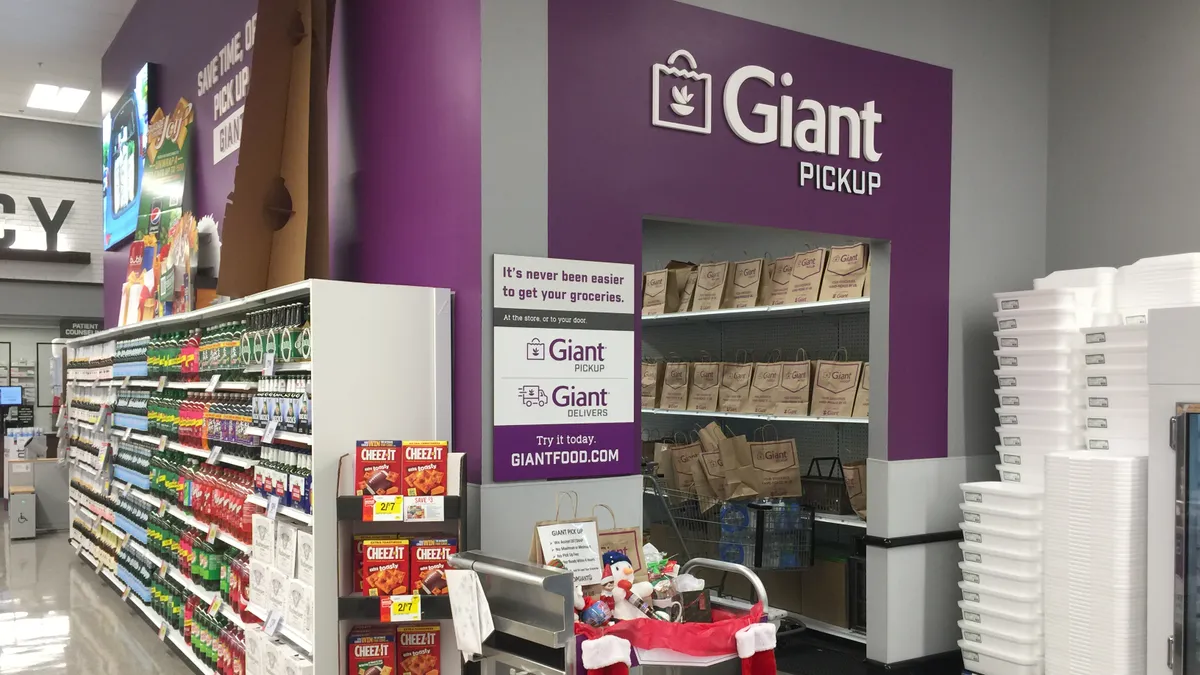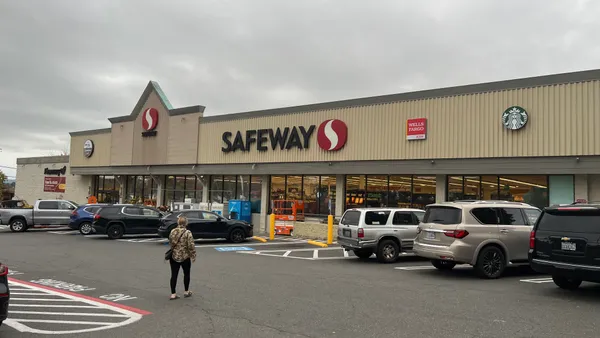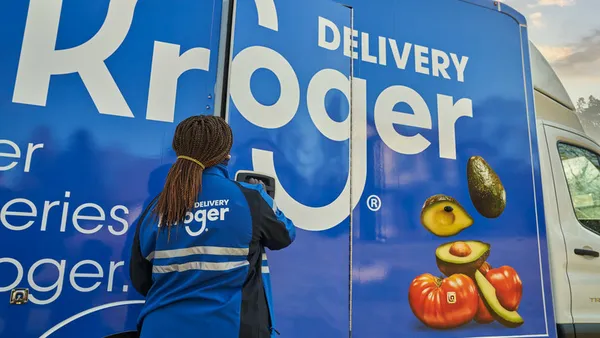Dive Brief:
- Supermarkets saw their online penetration slip by nearly 3 percentage points from 2021 to 2022 as they faced stiffer competition from mass retailers and discounters, according to a new report from Brick Meets Click and Mercatus.
- On average, more than half of all U.S. households bought groceries online each month during 2022, yet only one-third purchased them from supermarkets, per the report.
- The firms found that Target and Walmart have gained ground with upper-income online grocery shoppers as high inflation prompts consumers to look for ways to stretch their budgets.
Dive Insight:
While Brick Meets Click and Mercatus have previously explored grocers’ rising competition from mass merchants and documented the rise and decline of grocery e-commerce, this latest report takes a closer look at how age and income factor into online shopping behavior across four retail formats — supermarkets, Walmart, Target and hard discounters.
The findings indicate supermarkets need to evaluate the competition posed by Target and Walmart differently, especially to understand why those retailers are appealing to higher-income consumers.
The report is based on more than 42,000 responses to the monthly Brick Meets Click/Mercatus Grocery Shopping Survey for 2021 and 2022.
Among supermarkets’ online customer base, the rate of cross-shopping with both Walmart and Target bumped up year-over-year, per the report.
Brick Meets Click and Mercatus found that households making under $50,000 annually were 25% more likely to shop at Walmart than supermarkets for online groceries. Between 2021 and 2022, Walmart saw its reach with that income group increase by 2.1%, while supermarkets logged a 1.5% contraction.
While the “flight to value” by the most cost-conscious consumers noted by the report is not surprising given ongoing high inflation, the report sheds more light on which retailers are capturing those shoppers. In 2022, households making under $50,000 accounted for 40% of the customer mix at both Walmart and hard discounters, like Aldi, but only 30% for supermarkets and even less for Target.
Walmart gained ground with households earning more than $200,000 annually, per the report. While that income group, which represents more than 10% of U.S. households, was almost three times as likely to buy online from a grocer compared to Walmart in 2022, the mass retailer still managed to expand its penetration with that segment by 2.1%. Grocers, conversely, saw their share of that segment shrink by 1.2%.
Target has also managed to capture more higher-income shoppers in 2022 compared to the year prior, per the report. Target shares a similar customer mix in terms of income in comparison to supermarkets, yet the retailer has been more successful in appealing to younger shoppers and early-family formation households, the report noted.
While upper-income shoppers account for a significantly smaller portion of supermarkets’ online customer mix than people who earn less, they, in aggregate, generated more than one-fifth of supermarkets’ online sales, per the report. For example, households earning more than $200,000 annually spent 80% more online on a monthly basis than those making under $50,000.
Prices aren’t the only factor driving consumers to shift their online grocery purchases to lower-priced formats, with the report noting that Target has created a better shopping experience. Going forward, grocers need to have a better understanding of their core online customer segments and the value of those segments, David Bishop, partner at Brick Meets Click, said in a statement.
“Customers who shop with Supermarkets tend to do so because of the quality of products they can receive, rather than paying the lowest price,” Sylvain Perrier, president and CEO of Mercatus, said in a statement. “So, identifying and improving aspects of the online shopping experience that matter more to the quality-conscious customer can help increase competitiveness in ways that are not focused solely on price.”












